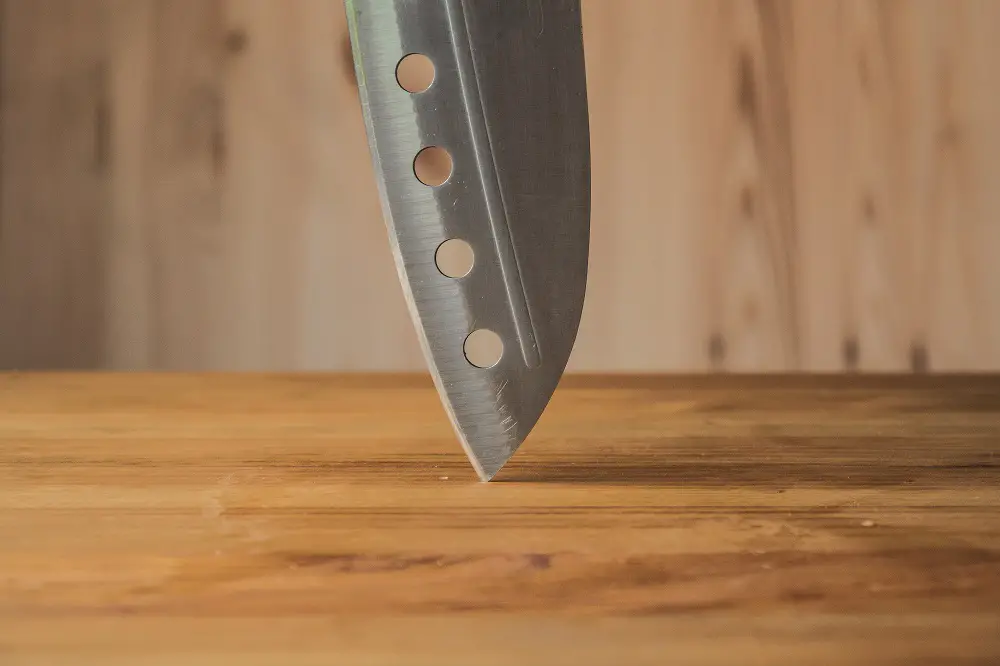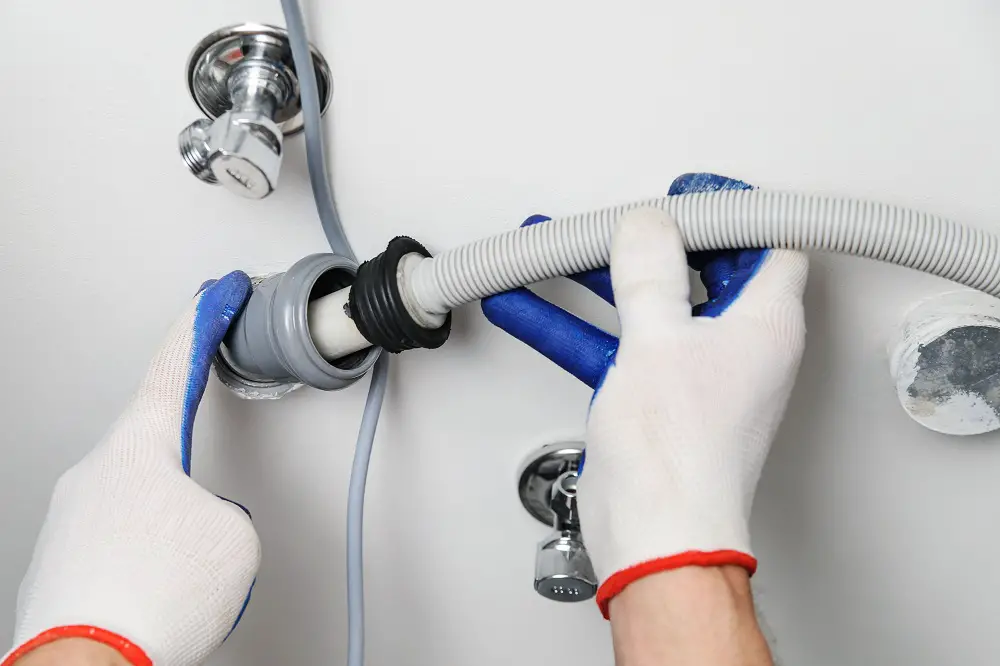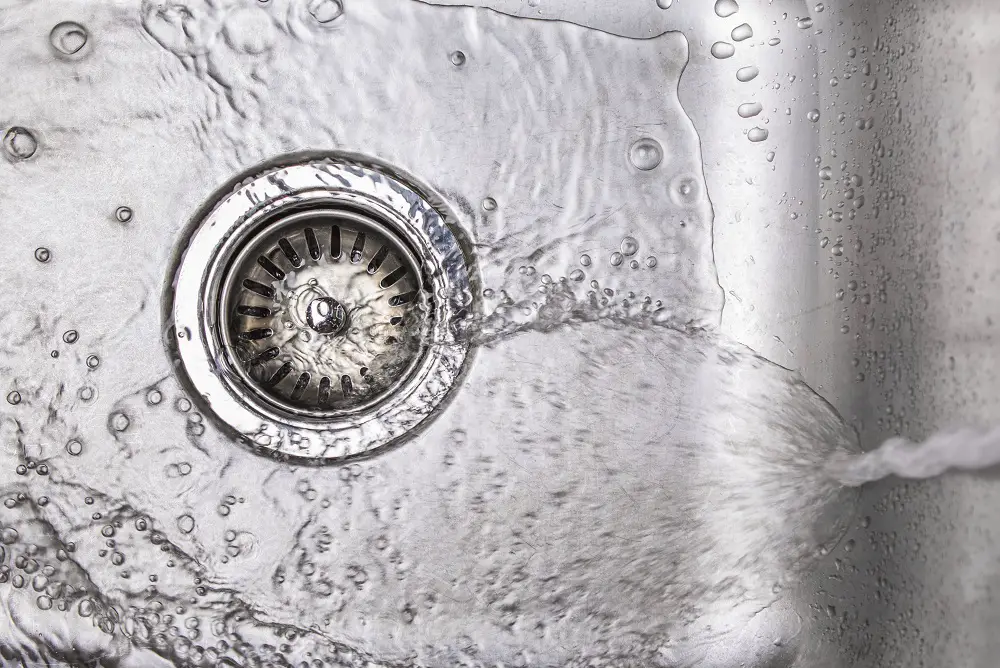A portable dishwasher can be highly beneficial if you have limited kitchen space. However, after buying one, you’ll need to know all the basics of what the appliance does and how you can operate it.
This article looks at how you can use portable dishwashers and other related FAQs.
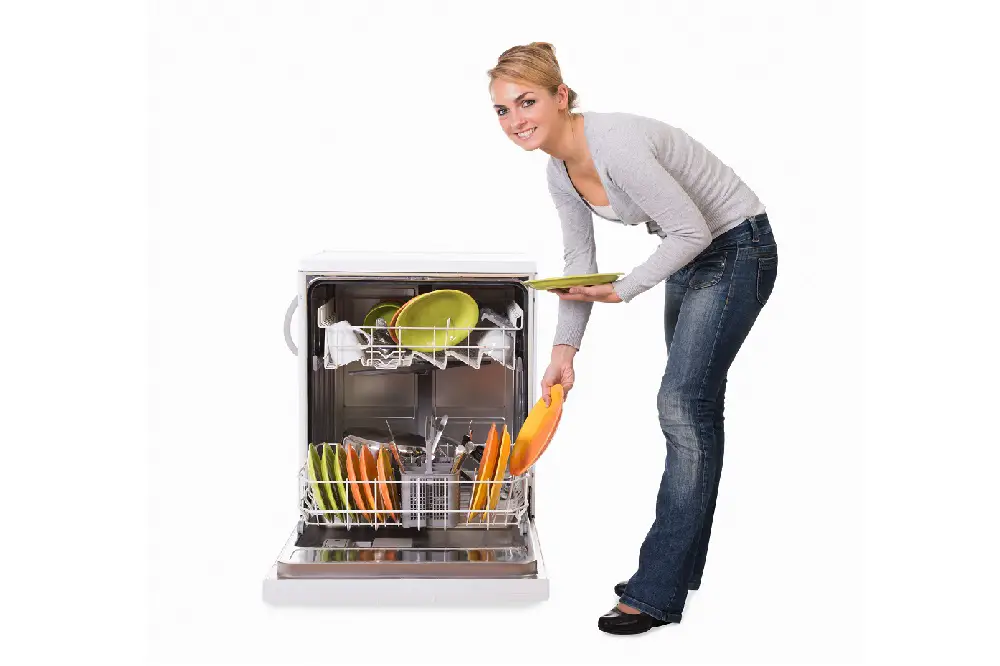
Table of Contents
How Does a Portable Dishwasher Work?
A portable dishwasher works like any full-size dishwasher. It takes in water from a sink faucet with the help of a hose and the intake valve. You load it with dirty dishes, and after cleaning the dishes, the machine dispenses the dirty water through the drain hose and the sink.
This main setup can be modified with a tank to omit the necessity of a faucet adapter and gives more freedom, especially for tiny places or mobile usage as in an RV.
You can find more on the principle of a portable dishwasher here.
Are Portable Dishwashers and Countertop Dishwashers the Same?
Well, both countertop and portable dishwashers fit the bill of a ‘mini dishwasher’ and are often confused with each other. But, in technical terms, they aren’t the same.
A countertop dishwasher needs to sit on top of a kitchen counter.
On the other hand, a portable dishwasher has rollers on the bottom, meaning that you can simply roll it next to a kitchen sink.
Another point is that a countertop dishwasher has a smaller water tank and only requires about 2 gallons of water per cycle. In contrast, portable dishwashers require about 3 gallons of water per cycle. This also means that the former consumes less water and electricity than the latter.
Note: Do keep in mind that apart from the storage and water usage, countertop dishwashers work in a way that’s similar to a portable dishwasher.
How to Set Up a Portable Dishwasher?
Once you buy the product, here is how you can set it up and run it. Note that the information applies to countertop dishwashers as well:
Step 1: Move the Dishwasher Close to the Kitchen Sink
First, you’ll need to move the dishwasher close to a sink such that the inlet and drainage hoses don’t bend or kink when connected to the sink.
In the case of a countertop dishwasher, make sure that the device isn’t placed under the sink. If you do so, you would most likely have to connect it directly to the plumbing lines, which can damage the product in the long run.
Step 2: Prepare Your Sink
While it is possible to use cold water in a dishwasher, hot water is the ideal and recommended choice. Thus, before connecting, you’ll need to open the hot water faucet until the water is scalding.
You’ll also need to ensure that the drain is fully unclogged to avoid the drain from overflowing when the dishwasher is done cleaning.
Step 3: Connect the Dishwasher to the Faucet
Unfasten the strainer from the kitchen faucet spout (also known as the threaded faucet spout) and unscrew it. You may need pliers for this. And on its place, screw the faucet adapter that came with your dishwasher.
When the above is done, find the inlet and outlet hoses on the back of the dishwasher. Connect the inlet hose to the adapter you just fixed, and position the outlet valve in the sink in a way that the dirty water clears through the sink.
Step 4: Plugin to the Nearby AC Outlet
Your dishwasher’s electrical cord should be at the back, right next to the hoses.
Voila! your dishwasher is now connected and ready to go!
Operating a Portable or a Countertop Dishwasher
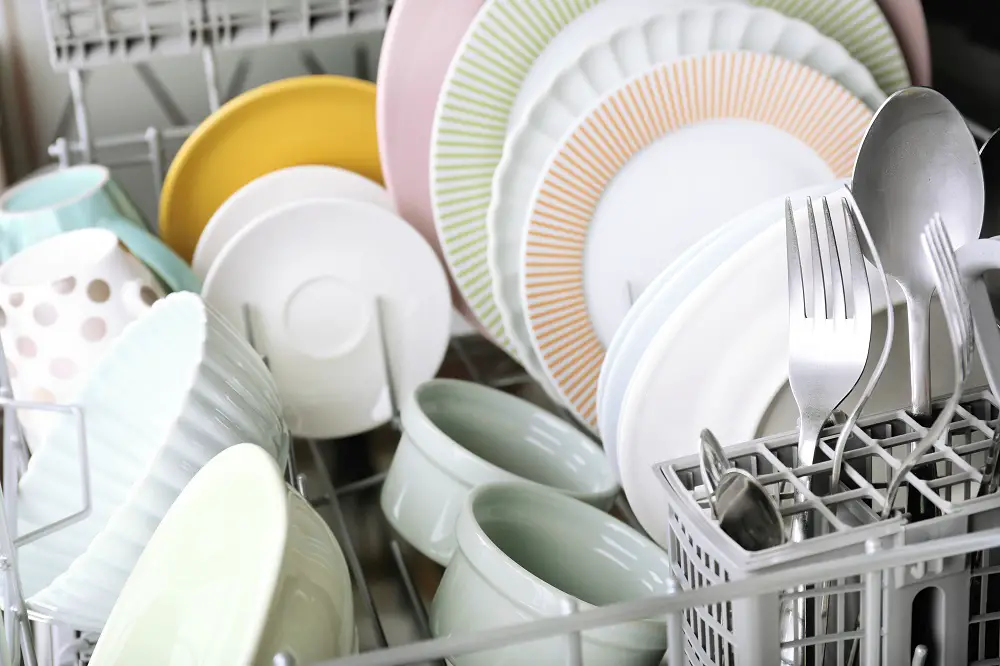
Here’s a step-by-step guide to operating portable or countertop dishwashers:
Step 1: Load the Dishwasher
While loading simply entails placing the dishes in the storage compartment, here are some tips to ensure optimal cleaning:
Put Bigger Utensils on the Bottom
Also, ensure that the dirty side is facing the center.
If they lean, face them downwards or inwards. This ensures that they’re directly pointed toward the direction of the tubes and rotating devices that spray water inside the machine.
Put the Smaller Utensils on the Top Rack
You should place glasses, bowls, and other small utensils in the upper compartment facing directly downwards. This is so that the water spray reaches the inside of them, and it also helps them dry quicker.
Place the Tupperware on the Top
It’s a good idea to place any plastic utensils that can melt on the top rack. Most dishwashers have heating elements on the bottom, which means there’s more heat on the bottom.
Be Careful with Spoons and Knives
A dishwasher can blunt and damage a knife, so it’s a good idea to wash it with your hand.
On the other hand, spoons and forks should be placed in a cutlery basket and shouldn’t touch each other.
Always lay down the serving spoons on the top compartment of the machine. You shouldn’t hang them. Otherwise, their handle can block the water spray from the tube.
Don’t Overcrowd
Rather, run your dishwasher the second time. Overcrowding the dishwasher will result in water not reaching every soiled area and can also block the tube.
Place Utensils Between the Twines
‘Twines’ are the steel grills inside the dishwasher. Apart from the spoons and smaller utensils, everything else should be placed between them; a dishwasher has been engineered so that maximum water reaches between the twines.
Step 2: Load the Detergent
You put the detergent in the detergent compartment in your machine, which is generally on the top. For best results, buy a detergent made specifically for a dishwasher.
There are generally three types of detergents:
- Single Dose Pacs
- Gels
- Powders
The effectiveness of the detergents can depend on various factors, such as the ingredients or the manufacturer.
(Now, we don’t want to advertise any brands here, but you can refer to this article from Consumer Reports to get more help in choosing a detergent.)
Getting back to the machine, make sure to fill the detergent exactly to the specified line in the compartment.
Step 3: Choose the Right Wash Settings
The next step is to turn the dishwasher on and choose the wash settings. The available settings may depend on the product’s brand and how powerful it is. Generally, the following features are available in most portable dishwashers:
Normal Wash:
A normal wash is used for moderately soiled everyday dishes.
Light Wash (Eco Wash):
As its name suggests, a light wash uses less water. It’s for lightly soiled utensils.
Heavy Wash:
A heavy wash cycle uses more water and vigorous spray blasts. It’s recommended for extremely greasy dishes, like pots, after cooking something like a curry.
Special Wash Cycles:
Some dishwashers can have special wash cycles for specific items. Examples include china, glassware, or spoon wash cycles.
Top Rack:
In a top/ bottom rack wash cycle, the water sprays are only focused on the particular rack. This allows you to save on water while not filling the machine completely.
Sanitary Wash:
In a sanitary wash cycle, the machine deploys water at very high temperatures (more than 150 degrees Fahrenheit) to kill all the bacteria and germs in the utensils. It’s used for items such as baby bottles and plastic containers.
FAQs Related to How to Use a Portable Dishwasher?
Finally, here’s some more information that can be essential to every dishwasher owner:
Should You Rinse Utensils Before Putting in a Dishwasher?
While it may seem counterintuitive, pre-washing dishes before putting them in the dishwasher can cause them to be less clean.
According to Consumer Reports, most dishwashers have a built-in soil sensing system that looks for grime in the plates and adjusts the amount of water and the number of cycles needed for cleaning.
And if you clean the dishes before putting them into the machine, the machine may misadjust the intensity of cleaning and cause your plates not to be cleaned adequately.
What Utensils Should I Not Put in a Portable Dishwasher?
Well, here are some items you shouldn’t put in both portable or regular dishwashers:
- Very delicate Chinawares (should be fine if your machine has a China wash cycle).
- Cast iron pots and pans
- Non-stick pots. The boiling water can cause the non-stick portion to fade away.
- Any utensils made with wood or ones that have wooden handles
- Painted and printed dishes
- Silverware and gold-plated items
- Insulated Coffee mugs and similar products
- Sharp knives
- Disposable aluminum plates and trays
- Dishes with paper labels
- Thin plastic dishes
Can You Use Cold Water Instead of Hot Water in a Portable Dishwasher?
Technically you can. Most of these appliances have a heating element that will heat the cold water before washing.
But remember that the heating element has been designed to increase the temperature of already warm water rather than heating cold water. Thus, the water may not be adequately hot, and there may be longer wash cycles because of the extra time needed to heat the water. This translates to fewer clean plates and higher electricity bills.
Conclusion
The two most important aspects of using a portable dishwasher are setting it up correctly and knowing how to stack the dishes for optimal cleaning. You’ll also need to look for suitable detergent and ensure that the dishes you own are actually safe to be kept in the machine.
